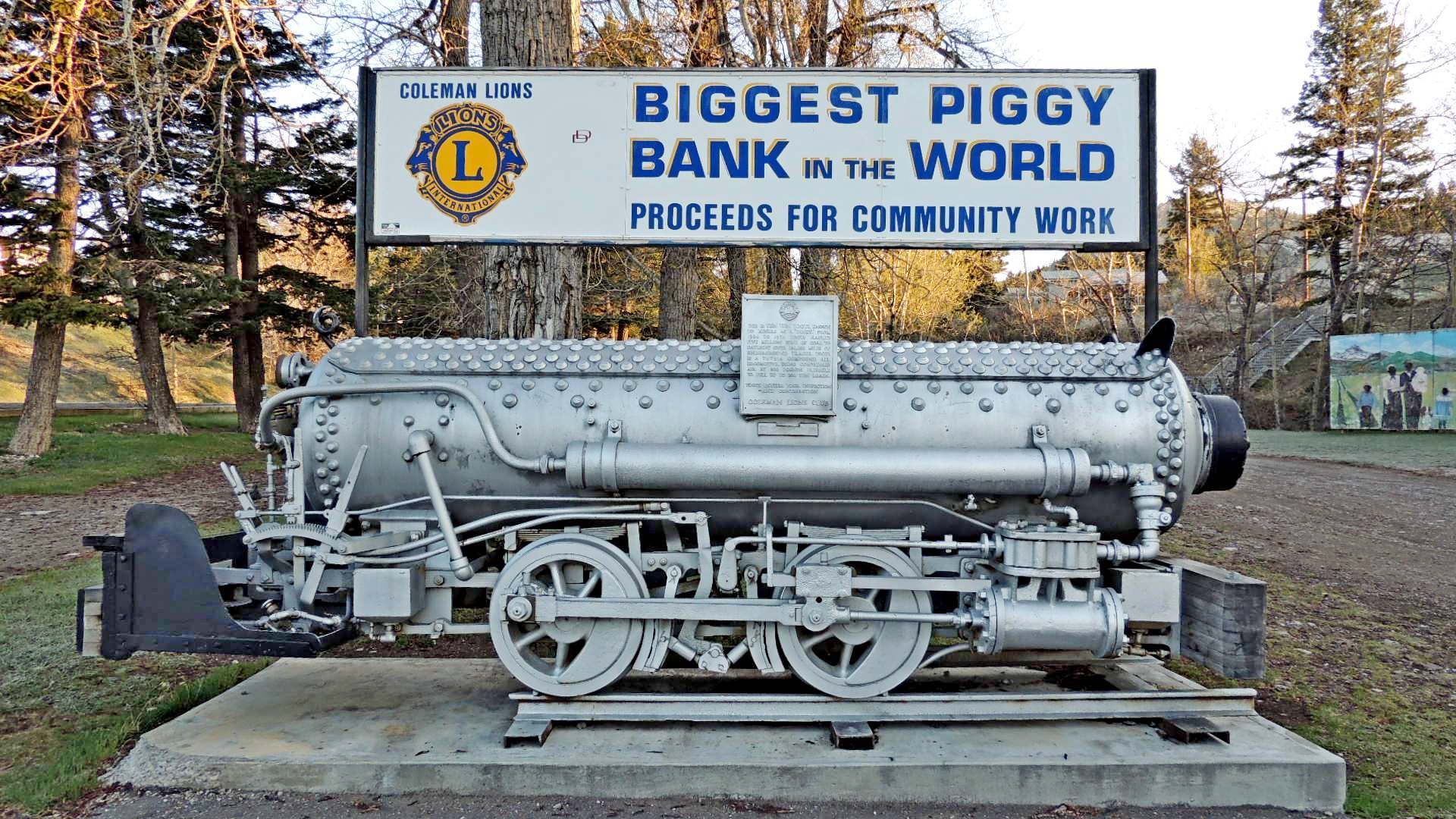
Flumerfelt Park - Coleman, Alberta
Posted by:  T0SHEA
T0SHEA
N 49° 38.183 W 114° 30.269
11U E 680182 N 5501194
This is a great park that features many interesting attractions. Located off 20th Avenue exit 76th Street.
Waymark Code: WMPM24
Location: Alberta, Canada
Date Posted: 09/17/2015
Views: 6
Flumerfelt Park, established in 1910, is an interesting park with dedicated benches, Homing Coming Plaque, playground, covered picnic area, walking trails and more to offer. A park would not be complete without the World Largest Piggy Bank and a geocache.
World Largest Piggy Bank: Ten Ton Toots is a tiny 0-4-0 locomotive which spent its working life underground, hauling coal to the surface in a coal mine, quite likely that of the International Coal and Coke Company.
Transcribed from plaque:
This is Ten Ton Toots; known to miners as a "Dinky". From 1904 to 1954 Toots hauled five million tons of coal to daylight over 180,000 miles of underground tracks.
Toots is a 7x7x14 compound air locomotive, using compressed air at 800 pounds pressure to pull up 200 ton loads.
Toots invites your inspection and contributions.
Coleman Lions Club
Mounted in Flumerfelt Park is a heritage plaque that explains about leisure time spent in the park and the Coleman Rodeo, the town's major summertime event from 1946 to 1960.
Flumerfelt Park
Alfred Cornelius Flumerfelt was president of the International Coal and Coke Company. He and his company founded the town of Coleman, which was named after one of his daughters, Norma Coleman Flumerfelt.
Flumerfelt donated this land to the citizens of Coleman for use as a recreational park. Brush clearing in 1909 and 1910 led to the creation of an athletics field in summer and an outdoor curling rink in winter. Other sports fields existed in Coleman as well.
During events such as Dominion Day celebrations, Flumerfelt Park would be decorated with "bunting, bonnets and merry features." Ice cream and refreshment tents would be set up, the town band would play in the bandstand, and one could cheer on team or track-and-field events for adults and youths, obstacle and sack races for boys and girls, and egg-and-spoon races for ladies.
Flumerfelt Park was also used for team sports, and later had tennis courts. In 1944 a portion of the park was covered by an indoor curling arena.
Like other public spaces, Flumerfelt Park and its bandstand was also a gathering-place for outdoor political meetings and labour rallies, particularly in the tumultuous 1920s and 1930s
.
Today, Flumerfelt Park remains a popular place for public recreation and community events.
Transcribed from sign located in the park.
